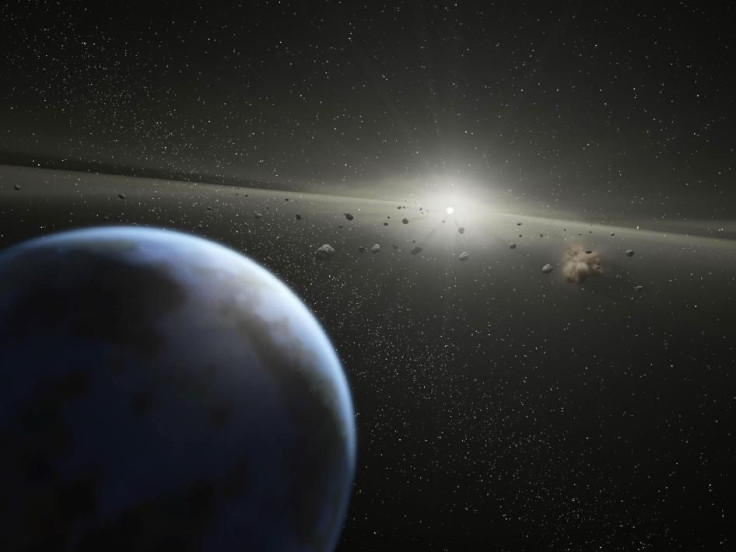NASA Spots Three Earth-Crossing Asteroids Approaching This Weekend

KEY POINTS
- Three asteroids will approach Earth this weekend
- The approaching asteroids have Earth-crossing orbits
- One of the asteroids could cause an impact event on Earth
NASA is currently monitoring a group of asteroids expected to approach Earth this weekend. According to the agency’s Center for Near-Earth Object Studies (CNEOS), the approaching asteroids have Earth-intersecting orbits.
The first asteroid that will visit Earth’s neighborhood has been identified as 2020 AK3. As indicated in CNEOS’ database, this asteroid is currently traveling across the Solar System at a speed of over 15,000 miles per hour. The agency estimated that it is about 121 feet wide.
After 2020 AK3’s arrival, Earth will be visited by the asteroid known as 2020 BH3. According to CNEOS, this asteroid has a diameter of about 128 feet wide. It is moving towards Earth at an average velocity of about 15,200 miles per hour.
The third asteroid that will approach Earth this weekend is called 2020 BN3. Aside from being the biggest in the group, 2020 BN3 is also the fastest. According to the data collected by CNEOS, this asteroid is traveling at an impressive speed of almost 65,000 miles per hour. The agency noted that it has an estimated diameter of 164 feet.
Both 2020 BH3 and 2020 BN3 are classified as Apollo asteroids. 2020 AK3, on the other hand, belongs to a group of asteroids known as Aten. According to NASA, these two types of asteroids are known to follow orbits that occasionally cross Earth’s path as it travels across the Sun.
This means that slight changes to the asteroids’ trajectory could send them on a collision course with Earth. Given the sizes and speeds of 2020 AK3 and 2020 BH3, these two asteroids will explode in Earth’s atmosphere during a collision. 2020 BN3, however, might be able to penetrate the atmosphere due to its diameter and velocity. If this happens, it could cause a minor impact event on Earth.
According to CNEOS, 2020 AK3 will fly past Earth on Jan. 25 at 2:23 a.m. EST from a distance of 0.02132 astronomical units or around 2 million miles away. 2020 BH3, on the other hand, will approach the planet on Jan. 26 at 6:49 a.m. EST. During this time, the asteroid will be about 0.01308 astronomical units or roughly 1.2 million miles from the planet’s center.
As for 2020 BN3, this asteroid will zip past Earth on Jan. 26 at 11:52 p.m. EST from about 0.01757 astronomical units or 1.6 million miles away.
© Copyright IBTimes 2024. All rights reserved.





















